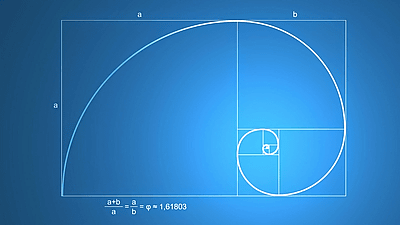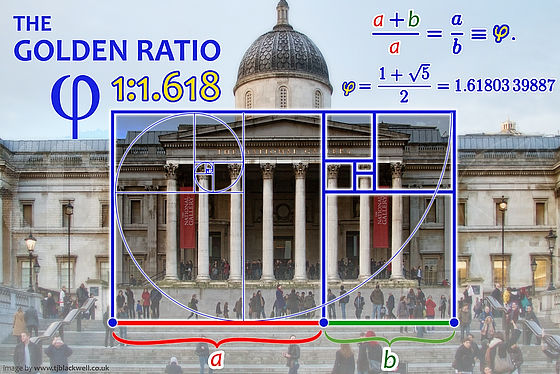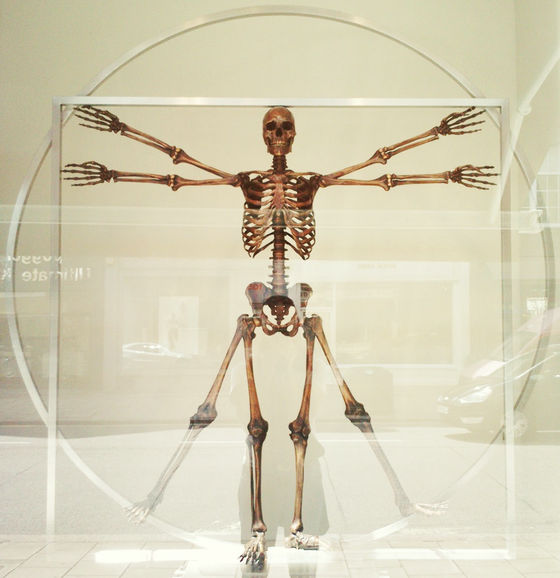Is "golden ratio" the biggest city legend in design history?

By2 TOP
An artist'sSalvador DaliAnd the architectLe CorbusierIs incorporating in the work "Golden ratio"Has been considered to create a beautiful balance in fields such as art, architecture and design.Temple of Parthenon,The Great Pyramid of Giza,Mona LisaAlthough many works and designs ranging from Apple's logo are said to have a golden ratio,Fast CompanyCo.Design operated by "The golden ratio is the urban legend"We have posted articles that argue.
The Golden Ratio: Design's Biggest Myth | Co. Design | business + design
http://www.fastcodesign.com/3044877/the-golden-ratio-designs-biggest-myth
◆ What is the Golden Ratio?

ByTom Blackwell
The definition of golden ratio is about 2300 years ago book "Euclidean theoryIt is described in "Golden Ratio WikipediaAccording to "the ratio a: b when dividing the line segments so that a: b = b: (a + b) holds when dividing the line segments into two with the length of a, b" I will. The approximate value of this ratio is "1.6180".
The most common example is "Golden Rectangle"When we cut out the largest square from it, we have the property that the remaining rectangle becomes the golden rectangle with the same aspect ratio as the original figure. However, although the golden ratio is expressed as an approximate value of "1.6180", if you calculate the ratio of objects composed of golden ratios, exactly "1.6180339887 ......" decimal places will last forever, such as "1.6180339887 ......". Professor Keith Debrin, who teaches mathematics at Stanford University, said, "Strictly speaking, the value of the real object ratio isIrrational number, The ratio of real world objects does not apply to the exact golden ratio. "

BySteven Luscher
Although Debrin Professor says that similar ratios exist as in iPad's 3: 2 display and HDTV 16: 9 display, the golden ratio is like a circle ratio, so there is no perfect circle in nature I can not ask for an accurate golden ratio for what exists in the real world. " Co. Design also argues that there is no scientific basis to support the golden ratio.
◆ Golden ratio as Mozart effect
The beauty of the Golden Ratio was born mainly by the claims of two people, of which one's argument was incorrectly quoted and the other theory is building its own theory. The first one is an Italian mathematician who is also called "father of modern accounting"Luca Pacioli. The book of 1509 "Sacred Proportion Theory" is a Roman architectVitruviusUsing the reasonable ratio advocated by "Divinity ratioAlthough it relates to the art, architecture, and design which explained about ", it did not refer to the theory of golden ratio.
Since then, in 1799 Mario Rivio published a book explaining the golden ratio, among which the "sacred proportion theory" was quoted, Pacioli mistakenly said "established the theory of golden ratio" It became a chance to be. Also, I was close with PacioliLeonardo da VinciBecause it provides an illustration to the sacred proportion theory, it is thought that "golden ratio is hidden in Da Vinci's paintings".

ByJavi
Believing the effect of the golden ratio spread in this way, the person who further developed its own theory is a German psychologistAdolph Zeissing. According to Professor Debrin, "one of the enthusiastic golden ratio researchers", the golden ratio is a universal law, and "the maximum for all the constituents ranging from structure, size, organic matter, inorganic matter and space to individuals It is a spiritual thought of the art and nature, which brings beauty and integrity to both areas of art and nature. " For example, Tsizing argues that the golden ratio appears by dividing the distance from the belly to the toe by weight. According to Professor Debrin, "When measuring things as complicated as the human body, it is easy to bring it closer to the value of" 1.6 "", and Tsizing's theory expresses the superstition of "Mozart's listening to intelligence" "Mozart effectThe 19th century edition "is expressed.
Is the golden ratio a beautiful proportion?

ByDevin.berg
Professor Debrin has been experimenting with students at Stanford University for a couple of years to see if the golden ratio is actually preferred. The experiment is to show the students a rectangle of various ratios including the golden ratio and have one of your favorite rectangles selected. If the golden ratio is the secret of aesthetics, it is thought that a shape close to the golden rectangle is always chosen, but the result is that every year it will fall apart. Also,Haas Business SchoolAccording to the research, it turns out that rectangular packages with a ratio of "1.414" or "1.732" on average are preferred, rather than the golden ratio "1.6180" for the package of easy-to-choose products.
Many designers are aware of the golden ratio "Urban legend"Barcelona Museum of Contemporary ArtDesigned a "legendary architect" with the nicknameRichard MeyerMr. is one of them. Acting as an architect In the early stages I am working on buildings based on the golden ratio, but from a certain point of time it is said that it is no longer to adopt the golden ratio in my design.
I also do a lot of modern construction as wellBiothingMr. Alisa Andrasek also agreed with this opinion, "I do not use golden ratio in my own work, I can imagine incorporating the golden ratio as the" spice "of the design, but all the buildings It is impossible to design with a golden ratio, which is too simple. "

While many other designers are talking to Professor Debrin that "the golden ratio is not a universal formula," if the professors of Debrin and designers are correct, why the myth of golden ratio is up to the present age Was it handed down? Professor Debrin says, "Most people do not calculate mathematically the ratio of objects, and if they are not golden ratio or not, we can not check ourselves by themselves" "Humans are genetically programmed creatures to seek meaning in patterns, their patterns are phantom, as if constellations were created by looking at the stars of the stars floating in space, if the design you like is golden ratio If it was, the thing you liked was not proportion, its design itself. "
Related Posts:
in Design, Posted by darkhorse_log







